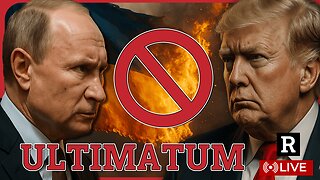Premium Only Content

Devastating Effects Of Russia and NATO Nuclear War
Devastating Effects Of Russia and NATO Nuclear War
Effects Of Nuclear War
World War 3 Effect
India Pakistan Nuclear War
The effects of a nuclear war can be catastrophic and far-reaching, causing immense destruction and loss of life.
Immediate Explosions: Nuclear weapons release an enormous amount of energy through a nuclear explosion. The initial detonation creates a fireball, a powerful shockwave, and intense heat, causing extensive damage in the immediate vicinity of the blast. Everything within the blast radius is obliterated, including buildings, infrastructure, and people.
The intense heat generated by a nuclear explosion can ignite fires over a large area, causing further destruction. People in close proximity to the blast may suffer severe burns or even vaporization.
After a nuclear explosion, radioactive particles are released into the atmosphere. These particles can be carried by wind and spread over large distances, contaminating the air, soil, and water sources. Exposure to nuclear fallout can lead to radiation sickness, cancer, genetic mutations, and long-term health problems.
A nuclear war can cause significant environmental damage. The release of radioactive materials can contaminate ecosystems and disrupt the balance of nature. The effects can persist for years or even decades, leading to the loss of plant and animal life, genetic mutations, and long-term ecological consequences.
A large-scale nuclear conflict has the potential to cause a phenomenon known as nuclear winter. The massive amount of smoke, soot, and debris injected into the atmosphere from the fires and explosions can block sunlight, significantly reducing temperatures worldwide. This can lead to a prolonged period of darkness, decreased agricultural productivity, famine, and further loss of life.
The immediate and long-term consequences of a nuclear war can result in a humanitarian catastrophe. The destruction of critical infrastructure, including healthcare facilities, transportation systems, and communication networks, would hinder emergency response efforts and exacerbate the impact on affected populations. Access to food, water, shelter, and medical aid would be severely limited, leading to widespread suffering and mass displacement of people.
It is important to note that the above scenarios are based on the assumption of a large-scale nuclear conflict involving multiple high-yield nuclear weapons. The actual effects would depend on various factors such as the number of detonations, the size of the weapons used, the targets, and the prevailing weather conditions. Nevertheless, any use of nuclear weapons would have devastating consequences, reinforcing the importance of preventing their use and striving for disarmament and non-proliferation efforts.
-
 1:45:16
1:45:16
Redacted News
4 hours agoTrump issues Ultimatum to Putin "End this war now or else," Russia not backing down | Redacted Live
167K121 -
 LIVE
LIVE
Fragniac
26 minutes ago🟢MAKE GAMING GREAT AGAIN‼
65 watching -
 LIVE
LIVE
Joker Effect
51 minutes agoCliques! Cliques Cliques! Are they toxic? Rumble Ambassadors and Network Axis Group chime in!
354 watching -
 1:07:56
1:07:56
Michael Franzese
3 hours agoBillionaire Insider Exposes Epstein’s Real Blackmail Operation
24.5K24 -
 46:12
46:12
Candace Show Podcast
4 hours agoBrigitte Presents “Proof” Her Brother Is Alive. | Candace Ep 221
57.6K137 -
 LIVE
LIVE
Eggman_92
4 hours agoStreaming in 4K (Hopefully No Issues!) 🎥 | Birthday Stream Friday 🎉 | Nintendo Switch 2 Giveaway
11 watching -
 LIVE
LIVE
NeoX5
20 minutes agoMore Retro Throwbacks | Part 5 | Summer Gaming Ep 25 | Rumble Gaming
57 watching -
 LIVE
LIVE
Quite Frankly
7 hours ago"American Eagle Rage Bait, Pay The WNBA?, Calls & More" 7/29/25
626 watching -
 9:11
9:11
China Uncensored
9 hours agoChina Riots! Communism FAILED Yet Again.
4.5K6 -
 LIVE
LIVE
Robert Gouveia
3 hours ago'Missing Minute' is GONE! New IMMUNITY Demands! Obama's PLOT! Schiff in TROUBLE!
819 watching